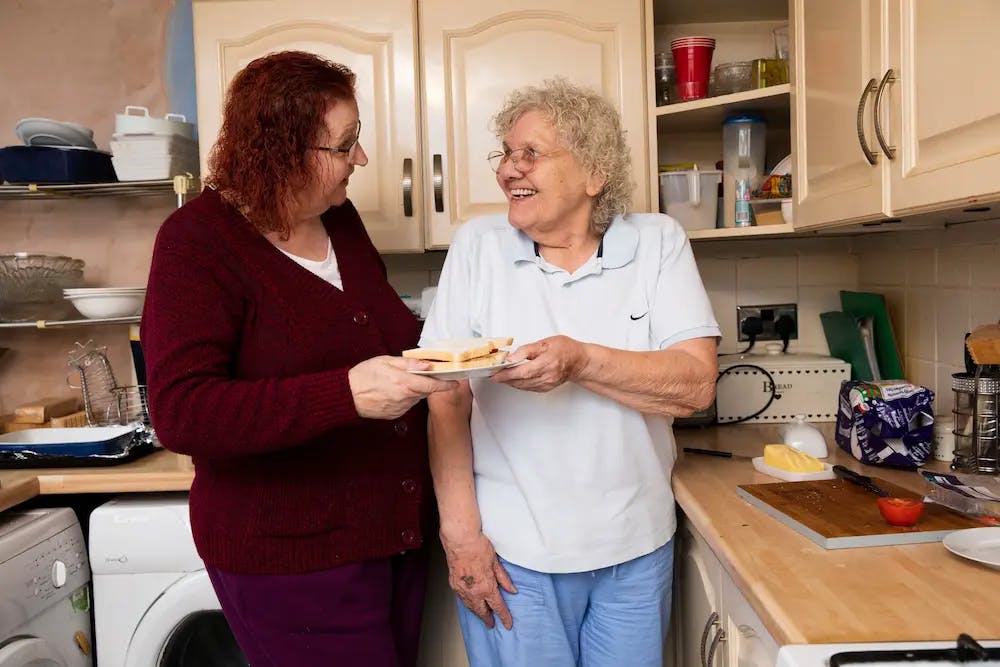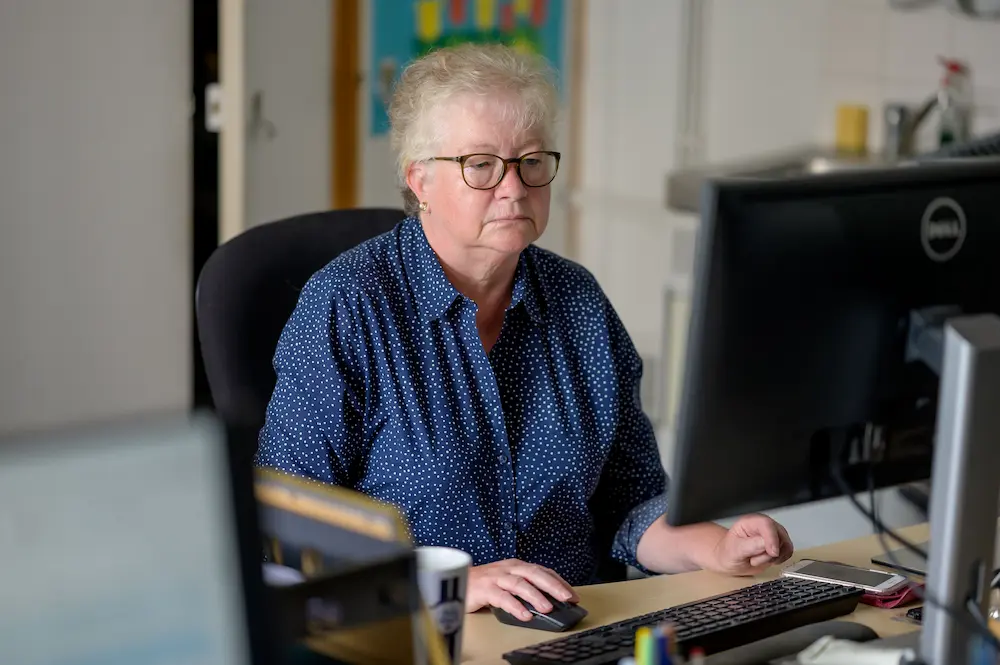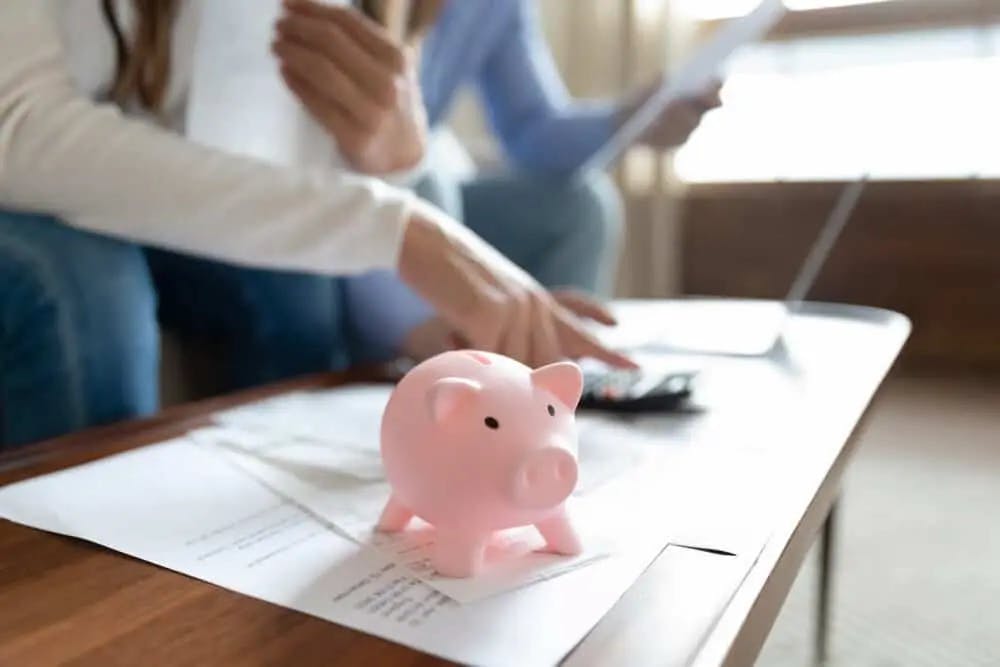Disability Living Allowance (DLA) For Adults

Estimated Reading Time: 9 minutes
This article was reviewed by Sara Chapin, Director of Finance at Lottie, on 24th January 2025, to ensure accurate and trustworthy information for care seekers. Sara Chapin has been a Certified Public Accountant with the National Association of State Boards of Accountancy since 2017. Next review due January 2026.
Disability Living Allowance (DLA) is a benefit for people with a disability or health condition who need some extra financial support. They may need this support because of the care they require, or to help them get from one place to another.
Although Disability Living Allowance is being replaced by Personal Independence Payment (PIP), many people still claim it.
In this article, we’ve gone over how it works, whether you’re able to claim Disability Living Allowance, how much you could potentially receive and whether your other benefits will be affected.
Kickstart your care search
Discover the best care homes in your area through Lottie.
In this article:
- What is Disability Living Allowance?
- Are you eligible?
- Disability Living Allowance rates
- How will you be paid?
- How to claim
- What to do if your circumstances change
- Challenging a decision
- Is Disability Living Allowance affected by other benefits?
- What conditions qualify for Disability Living Allowance?
- Can you get Disability Living Allowance in a care home?
What is Disability Living Allowance (DLA)?
This is a regular payment which aims to help disabled people who require financial assistance with either their care or mobility needs. Some people may need financial aid for both of these things.
The amount of money you receive depends on which components you’re eligible for, and which rate within each component you’re eligible for (more on this later).
Disability Living Allowance (DLA) is a tax-free benefit and isn’t means-tested, meaning your income and savings won’t be taken into account (like they would through a financial assessment).
DLA is being replaced by other benefits, including Personal Independence Payment (PIP) and Attendance Allowance - depending on your age.
This process of being replaced by other benefits began for most people between 2013 and 2015. This change was made to better reflect the way we understand disability in a modern society.

Are You Eligible For Disability Living Allowance?
You must have had care and/or mobility needs as a result of an illness, medical condition or disability for at least three months before you're able to claim Disability Living Allowance. You must also expect to continue having these needs for at least six months after making a claim.
People who claim Disability Living Allowance often require care at home or in a care home. If you pay for your own care, you can continue receiving Disability Living Allowance in a care home. If the local authority pays for your care, you can continue receiving the mobility component indefinitely, but the care component will stop 28 days after you enter the home.
If you’re over 16
If you aren’t already claiming Disability Living Allowance (DLA) and are aged 16 years or older, you’re unable to apply for it.
However, if you were born before 8th April 1948 and are currently claiming DLA, you can continue to do so.
If you’re currently claiming DLA and are aged between 16 and the State Pension age (currently 66 for men and women in the UK), you’ll be written to by the Department for Work and Pensions, telling you when your DLA will end and when you’ll be required to switch over to a different benefit.
The alternative benefits you could be eligible for are:
Personal Independence Payment - If you live in England or Wales and haven’t reached the State Pension age
Adult Disability Payment - If you live in Scotland and haven’t reached the State Pension age
Attendance Allowance - If you’ve reached the State Pension age and don’t already receive Disability Living Allowance
If you’re under 16
If you’re aged under 16 years old and live in England or Wales, you’re eligible to apply for Disability Living Allowance.
Meanwhile, people living in Scotland can instead apply for Child Disability Payment.
We’re here to help you find the right care home for you or your loved one. You can request a free list of care homes from our Care Experts, who will then share homes matching your budget, location and type of care needed. You can also search for care through our easy-to-use directory.
Disability Living Allowance Rates
Disability Living Allowance comprises two components - the ‘care component’ and the ‘mobility component’.
The amount you receive depends on which of the following rates you’re eligible for. Below, we’ve provided the 2025/2026 rates for DLA.
Care component
If you have additional daily care needs, including help with getting dressed or undressed, using the toilet and washing. You may also need help with household tasks like cooking and cleaning. The care component is split into three weekly rates, depending on how great your care needs are.
| Care Component | Weekly Rate | Four-Weekly Rate | The Support You’ll Require |
|---|---|---|---|
| Lowest | £29.20 | £116.80 | You only require assistance for some of the day, or with cooking meals. |
| Middle | £73.90 | £295.60 | You need frequent help or supervision during the day and some degree of supervision at night. |
| Highest | £110.40 | £441.60 | You need constant help or supervision during the day and at night. |
Mobility component
If you’re unable to walk or find walking difficult. You may also be unable to take unfamiliar journeys without assistance. This lack of mobility could be caused by a physical disability, illness or other medical condition. The mobility component is split into two weekly rates, depending on how limited your mobility is.
| Mobility Component | Weekly Rate | Four-Weekly Rate | The Support You’ll Require |
|---|---|---|---|
| Lower | £29.20 | £116.80 | You need some degree of guidance or supervision when outdoors. This could be due to a physical or mental disability. |
| Higher | £77.05 | £308.20 | You have a more severe disability which limits your mobility. You may only be able to walk short distances unaided, or be unable to walk outdoors at all. |
How Will You Be Paid?
Disability Living Allowance is usually paid every four weeks. That’s why we’ve provided both a weekly and four-weekly rate in the tables above.
If a payment date falls on a bank holiday, you’ll instead be paid before the bank holiday, and will then continue to be paid as normal.
DLA payments will go straight into your chosen bank, building society or credit union account.
How To Claim
If you’re aged 16 or over, you’re unable to make a new Disability Living Allowance claim. You may instead be able to claim Personal Independence Payment (PIP), Adult Disability Payment or Attendance Allowance.
If you already receive DLA
If you already receive Disability Living Allowance (DLA), what happens next is determined by your age:
If you live in England, Scotland or Wales and were both before 8th April 1948, you’ll continue to receive DLA (provided you’re still eligible for it)
If you live in England, Scotland or Wales and were both after 8th April 1948, you’ll instead be re-assessed to determine your eligibility for PIP. The Department for Work and Pensions (DWP) will send you a letter if you need to move over to PIP
What To Do If Your Circumstances Change
If your circumstances change in some way when you’re already claiming Disability Living Allowance (DLA) - and these changes may affect your entitlement to the benefit - you should let the Department for Work and Pensions (DWP) know about this as soon as possible.
Changes could include the level of care you require increasing or decreasing, going abroad for a long period or permanently entering a care home.
Depending on your age, the DWP may ask you to instead claim Personal Independence Payment (PIP). Here’s the list of medical conditions that are eligible for PIP and the 2025 PIP rates.
In Northern Ireland, you can instead contact the Disability and Carers Service to report this change.

Challenging A Decision
If a decision regarding Disability Living Allowance (or Personal Independence Payment) has been made that you disagree with, you can ask for a ‘written statement of reasons’ which will then be sent to you.
If you believe the following decision to be incorrect as well (which will be made after you ask for a ‘written statement of reasons’), you can then ask the Department for Work and Pensions (DWP) to look into this decision. This is known as a ‘mandatory reconsideration’.
If you don’t agree with this decision either, the next step is to appeal through the Tribunal Service which acts independently of the DWP.
Is Disability Living Allowance Affected By Other Benefits?
If you receive Disability Living Allowance, you may also be eligible for larger amounts of other benefits, including::
- Child Tax Credit
- Employment and Support Allowance (ESA)
- Housing Benefit
- Income Support
- Pension Credit
- Universal Credit
- Working Tax Credit
If you receive the care component, someone who cares for you might also qualify for Carer’s Allowance.
What Conditions Qualify For Disability Living Allowance?
You don’t need to have a specific condition to qualify for Disability Living Allowance. Instead, you must have a disability and require support that falls under either the ‘care component’ or ‘mobility component’.
People who qualify for the Care Component need assistance with things like getting dressed, preparing and cooking meals, using the toilet and other personal hygiene tasks.
People who qualify for the Mobility Component will be unable to walk or find walking difficult. Some people qualify because they’re unable to walk outdoors or on an unfamiliar route with assistance.
Department for Work and Pensions data shows that well over 3,200,000 in the UK have received or currently receive DLA, with arthritis, learning difficulties and mobility-related issues being some of the most common reasons for claiming.
Can You Get Disability Living Allowance In A Care Home?
You can claim DLA while living in a care home if you pay for your own care. This applies to the care and mobility components.
If some or all of your care is paid for by the local authority, the care component of DLA will only be paid for the first 28 days after entering a care home. However, you can still continue receiving the mobility component.
Lottie matches care seekers with the best care homes for their needs. You can request a free care home shortlist from our Care Experts, who will share homes matching your budget, location and type of care needed. You can also search for care through our easy-to-use directory.
Frequently Asked Questions
What is the criteria for Disability Living Allowance?
People eligible for Disability Living Allowance (DLA) will have some kind of disability and will need assistance with either care or mobility-related costs. DLA has now been replaced by Personal Independence Payment (PIP) for people aged between 16 and the State Pension age (currently 66 for men and women in the UK). To be eligible, you’ll need to meet either the ‘care component’ or ‘mobility component’ of DLA.
Can you apply for DLA?
If you’re aged 16 or over, you can no longer apply for DLA. You may instead be able to apply for Personal Independence Payment, Attendance Allowance or Adult Disability Payment.
You can only make a new DLA claim for a child aged under 16.
What conditions qualify for Disability Living Allowance?
You don’t need to have a specific condition to qualify for Disability Living Allowance. Instead, you must have a disability and require support that falls under either the ‘care component’ or ‘mobility component’.
How much is the full Disability Living Allowance in the UK?
If you qualify for the highest rate of both the care component and mobility component for Disability Living Allowance, this will total £187.45 per week. When paid on a four-weekly basis, this will total £749.80 every four weeks.
What are the three rates of DLA?
The care component of DLA comprises three rates - highest, middle and lowest. There’s also the mobility component, but this is only made up of two rates - higher and lower.
Can you get a Motability car at the lower rate of DLA?
You could be eligible for a Motability car or vehicle if you’ve been awarded:
- The higher rate of the Disability Living Allowance (DLA) mobility component
- The enhanced rate of the Personal Independence Payment (PIP) mobility component
- Armed Forces Independence Payment (AFIP)
- War Pensioners’ Mobility Supplement
Receiving the lower mobility rate of DLA won’t make you eligible for the Motability scheme.
How will you be paid?
Disability Living Allowance is usually paid every four weeks on a Wednesday.
If a payment date falls on a bank holiday, you’ll instead be paid before the bank holiday, and will then continue to be paid as normal. DLA payments will go straight into your chosen bank, building society or credit union account.
Free Care Fees & Funding Email Course
Written by our team of experts and designed to help families fund later life care in England.




